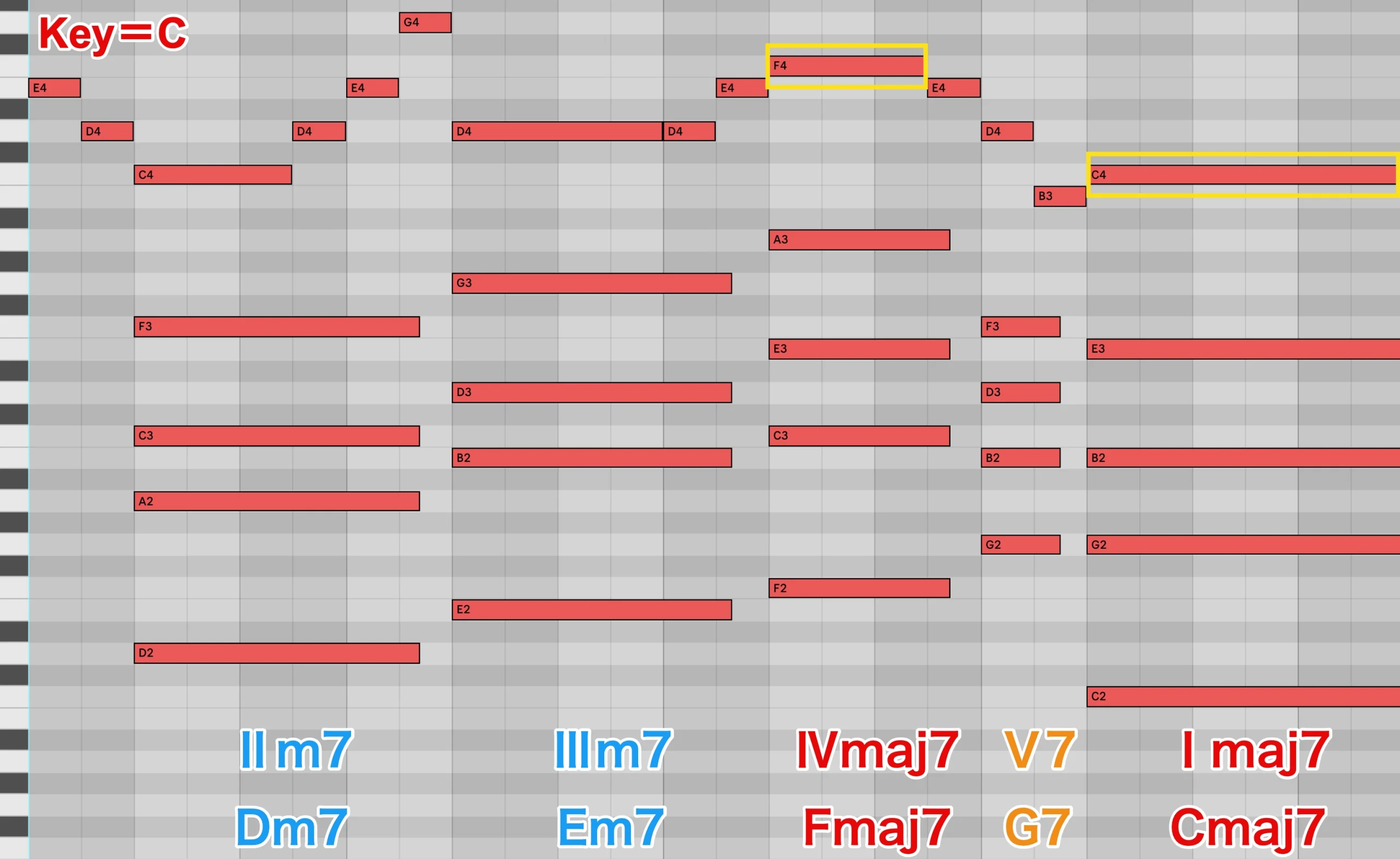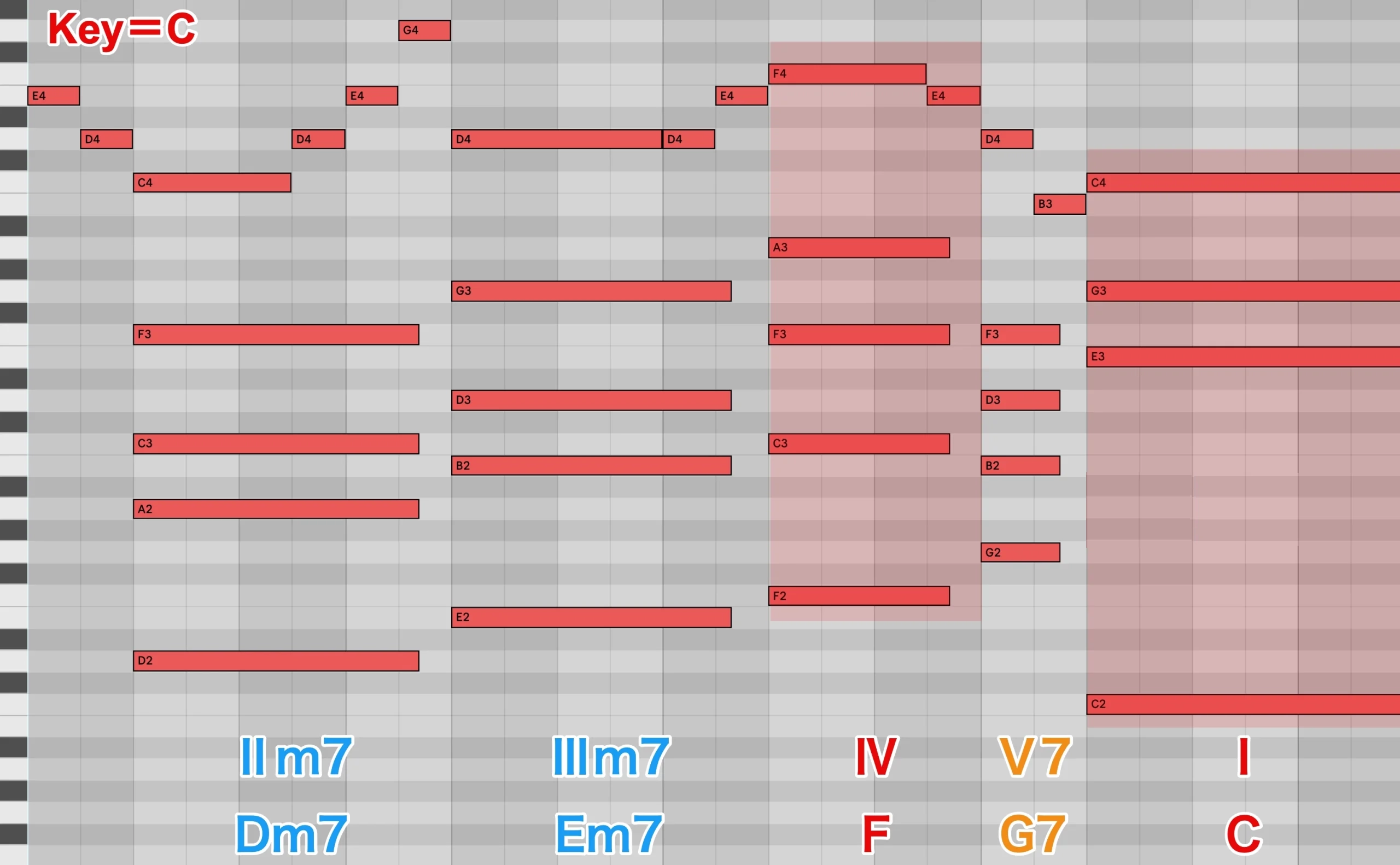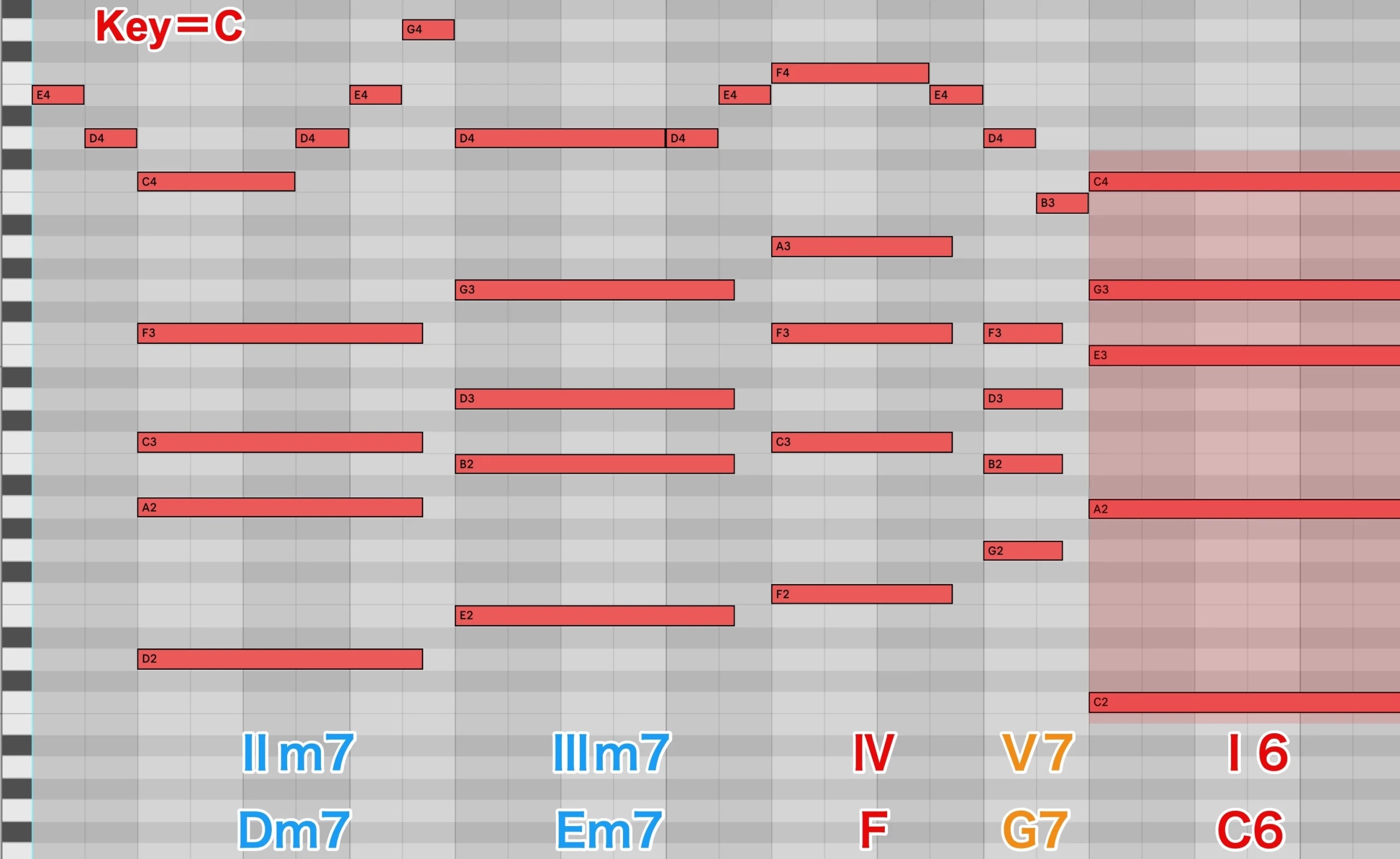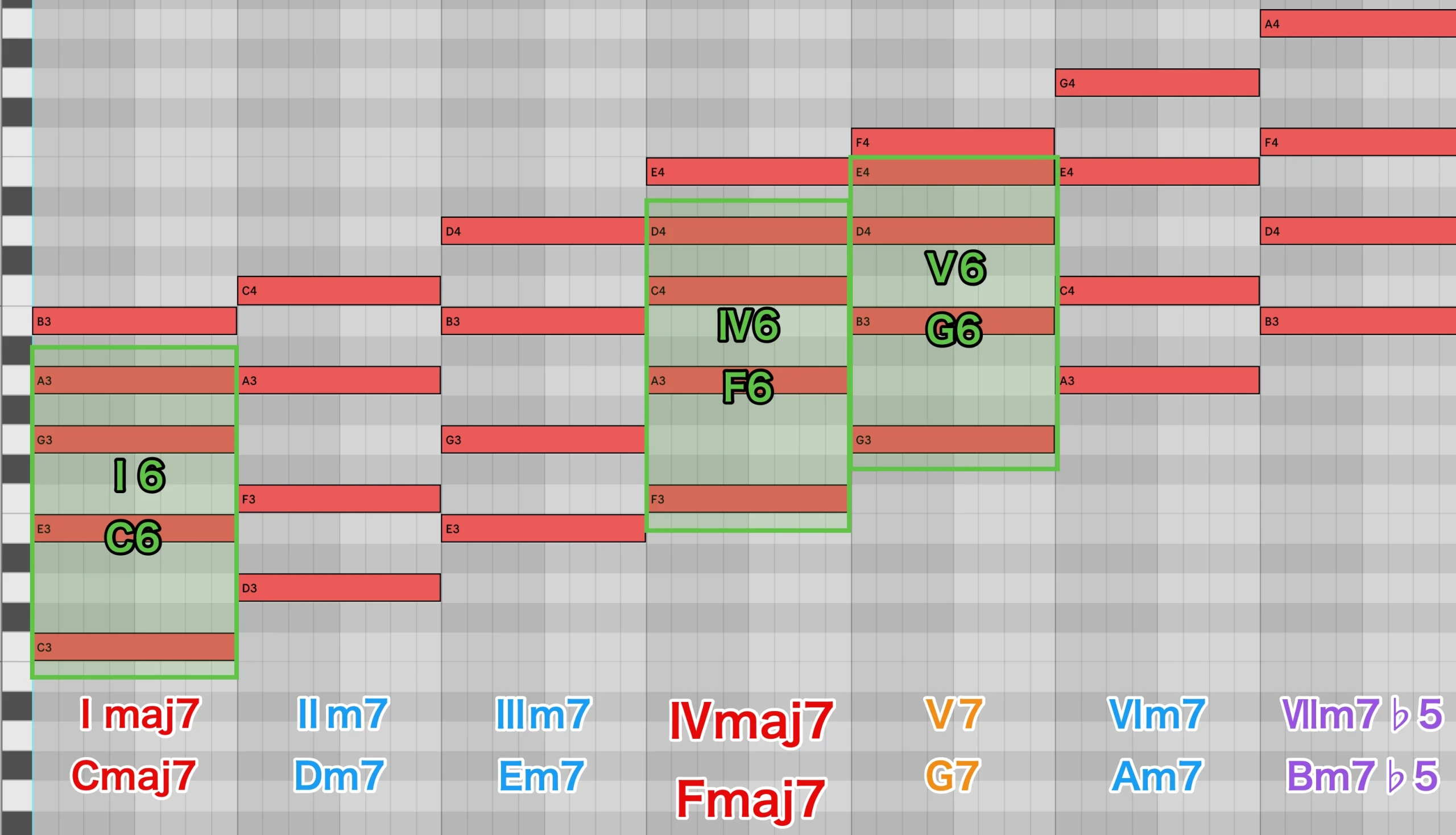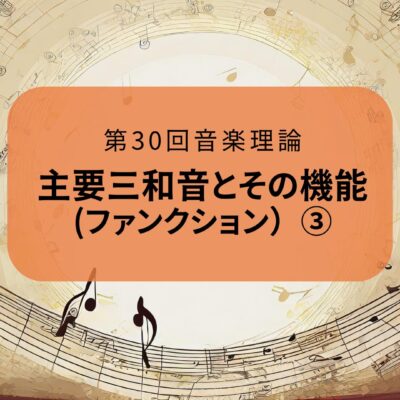メジャー・シックス/マイナー・シックス コード(後編)/音楽理論講座
アボイド・ノートを使っていないのに響きが悪いケースがある

前回メジャー・シックス / マイナー・シックスコードの構成を学びましたが、アボイド・ノートからの流れでシックスコードをご紹介しておきたかった理由について、今回解き明かしていきたいと思います。
まずはこちらをお聴きください。
メロディーとコードがうまく響いていない箇所がありますね。
譜面とピアノロールで確認してみましょう。
特に、四角で囲んだ箇所を意識しながら、音源とあわせて確認してみてください。
こうして確認してみると、特にアボイド・ノートを目立たせて使っているということもないですね。
ではなぜ、響きが悪く聴こえるのでしょうか?
それぞれの箇所を切り取って聴いてみましょう。
- Fmaj7の箇所(メロディのトップノートはF)
- Cmaj7の箇所(メロディのトップノートはC)
両方ともメジャー・セブンスコードでメロディーのトップ・ノートがルート音という共通点があります。
ここで気づいた方もいるかもしれませんが、メジャー・セブンスコード(R M3rd P5th M7th / 1 3 5 7)のM7th(7)がメロディーのR(1)と濁った響きを生んでいるのですね。
今回はあえて非常に目立つ形で、同時にコードとメロディーを鳴らしているので、際立って響きが悪く聞こえますが、作曲の過程でこのような構成になってしまうことは時々あります。
シックスコードを用いて響きを整える
では、どのように対処すれば良いのでしょうか。
いくつかありますが、最も簡単なのは3和音(トライアド)にしてしまうという方法です。
響きの悪さは解消され、メジャーコードの特徴でもある曇りのない、透き通った明るさになりました。
もし響きがシンプルすぎると感じたら、前回のメジャー・シックスコードを使用することもできます。
Key=CメジャーのImaj7の代理として、C6を使用したという形です。
この場合は、I6(ワン・シックス)と表記されますね。
- Key=Cメジャー:IIm7→IIIm7→IV→V7→I6(Dm7→Em7→F→G7→C6)
最後だけシックスにすると唐突に雰囲気が変わってしまう感じもしますが、前のコードに少し手を加えれば、スムーズに繋ぐこともできます。
このようなコードテクニックは後々紹介しますので、今回はシックスを用いてメロディーを美しく響かせる可能性についてのみ意識しておいてください。
メジャースケールで作成できるメジャーシックスコード
ではここで、メジャースケールから作り上げたダイアトニックコード上で、スケールの音だけで出来上がる、メジャー・シックスコードを探してみましょう。
このように、I,IV,Vの箇所でメジャー・シックスコードを作ることができます。
もちろん代理として使用しても良いのですが、V6にはトライトーンが含まれていないので、ドミナントとしては弱いというポイントを押さえておきましょう。
- C→G7→C
- C→G6→C
また、アイデアの1つとして、メジャー・セブンスコードなどと交互に使用するのも面白いです。
その際はトップノートを意識してメロディーを考えてみると良いでしょう。
楽曲解析の際にシックスコードを見つけたら、ぜひメロディとの関係性も確認してみてください。
次回は再びコードと楽曲の構成に戻り、「終止」について注目していきます。







